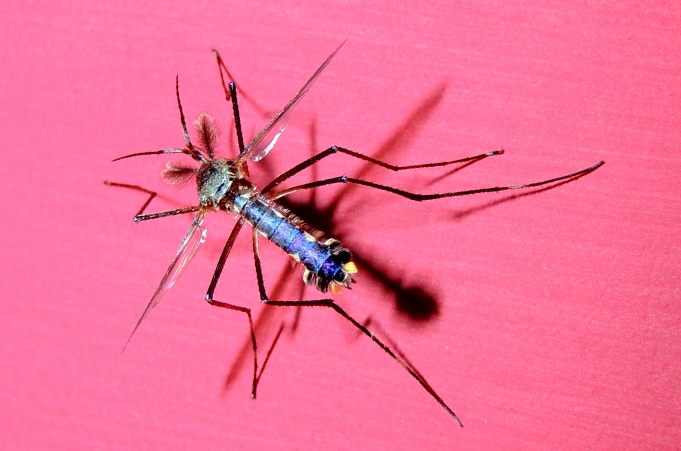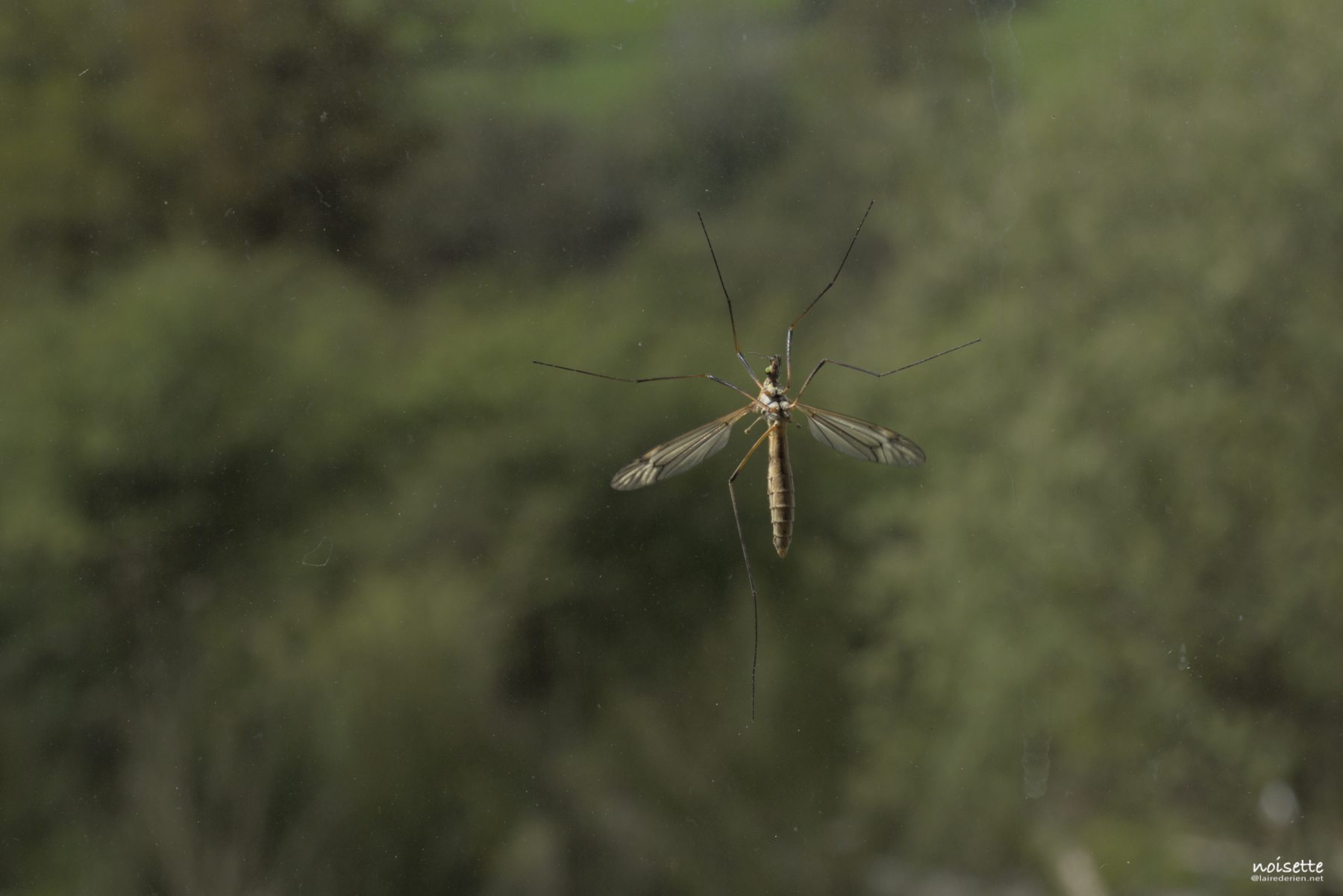GMO and sterile insects : not very efficient
A certain number of insects are considered as pests, because they carry diseases or are parasites on crops. There are many ways to combat them : chemical insecticides, pheromone traps, induced sterility, etc.
Several techniques are being developed to induce sterility in an insect. These techniques – radiation mutagenesis, transgenesis, inoculation with the bacterium Wolbachia [1] and gene drive – give genetically modified insects. There are many sterile insect projects. It is difficult to really know how effective they are, given the lack of transparency of the companies, and the complexity and diversity of the ecosystems.
Regarding sterility achieved through irradiation, the best known ’success story’ is the eradication of the pink cotton bollworm (Pectinophora gossypiella) in Arizona (USA) [2]. Bruce Tabashnik, an entomologist at the University of Arizona and one of the leaders of this programme, tells us that « this insect was declared eradicated from the cotton-growing regions of the American continental in 2018 by the U.S. Department of Agriculture » [3]. More than two billion of them were counted in Arizona in 2005, before the programme was set up. To eradicate them, eleven billion sterile butterflies were released from 2006 to 2015 in Arizona alone. Yves Carrière, co-responsible for this programme, tells us that ’sterile insects would not have been enough to eradicate this pest : they had to be combined with Bt cotton and other practices’ [Personal interview]. Bruce Tabashnik confirms this : « Sterile butterfly releases alone have been tried before and could not suppress the established populations because there were not enough sterile butterflies compared to wild butterflies ». Another point made by Yves Carrière is that this insect is almost exclusively associated with cotton. This is an advantage because « the problem with sterile insects is that it is difficult to ’cover’ all the populations of insects to be eradicated, if these insects use several types of habitat ». The researchers also point out that « in India, pink cotton bollworm populations have exploded after developing resistance to Bt cotton. […] [W]e are not aware of any previous examples where pest eradication has been achieved by a transgenic crop alone or in combination with other tactics. In at least 22 documented cases worldwide, nine major pests have developed practical resistance to Bt crops.
Oxitec conducted a behavioural trial with such a genetically modified butterfly (for fluorescence) but irradiated (for sterility) between 2006 and 2008 in Arizona [4]. After releasing several dozens of millions of butterflies, Oxitec estimates that »the attributes critical to [the sterile insect technique] in the field – ability to find a mate and initiate copulation, as well as dispersal and persistence in the release area – were comparable between the genetically engineered strain and a standard strain“. In 2012, Oxitec tested a new, genetically sterile version of this butterfly (OX3402C) [5] in a confined environment. No information was given on any other field trials. Bruce Tabaschnik tells us that this transgenic version is intended for countries such as India [6], where the parasite proliferates and has developed strong resistance to Bt. Oxitec says its transgenic butterfly will also be useful where the irradiated version is not possible because of the prohibitive costs and safety issues associated with establishing irradiation facilities.
But the most widely used GM insect is the mosquito. Transgenic mosquitoes, irradiated or inoculated with Wolbachia, have been widely disseminated internationally.
Oxitec has successively developed two strains of transgenic Aedes aegypti mosquitoes. In theory, only the transgenic males are released and mate with wild females. In both cases, the offspring need tetracycline to survive. In the first case, OX513, the entire offspring dies quickly (3/4 days according to Oxitec) [7], while in the second case, OX5034, only the females die early. Thus, this second mosquito allows additional mating cycles, thus reducing the number of releases. Oxitec acknowledges that a small proportion of transgenic females are nevertheless released (unintentionally) and that hybrids (transgenic x wild) may reach adulthood (between 3 and 5%).
All these releases were nevertheless accompanied by other measures. In Brazil, the municipalities involved continued to spray insecticides and reduce the number of stagnant water points, where mosquitoes breed, as evidenced by the agreement between Oxitec and the municipality of Piracicaba [8], or the testimony, in May 2022, of Ulisses Bernardinetti, coordinator of the dengue control programme in Indaiatuba [9]. In this city and in Jardim Morada do Sol, where releases began at least in 2018 and will be maintained until mid-2023 [10], transgenic mosquitoes appear to be of little use. Indeed, several hundred cases of dengue were still detected in 2022.
Without being able to put an exact figure on it, dozens or even hundreds of billions of mosquitoes have been released in Brazilian cities. But the impact on dengue is, in the end, quite small. In 2022, the WHO counts 929 deaths and 2,182,229 cases… about the same as in 2016 (707 deaths and 2,220,482 cases) [11].
Oxitec has plenty of other transgenic insect projects in the pipeline : other species of mosquitoes, vectors of malaria, of course but as well agricultural insect pests[18 million to try to modify two subspecies of Anopheles. Oxitec press release, « Oxitec’s Malaria Program Receives New Investment to Expand to Pilot Phases in Two Malaria-Affected Regions », 13 April 2022]]. They are designed to compensate for the failure of chemicals or Bt plants. Oxitex has developed a transgenic, sterile version of pests that attack fruit trees (Ceratitis capitata), soybeans (Chrysodeixis includens), maize (Spodoptera frugiperda), plants of the cabbage family (Plutella xylostella) or livestock (Rhipicephalus (Boophilus) microplus). GM Plutella xylostella was field tested in New York State in 2017 on 2.6 hectares. Five years later, no further trials have been conducted [12]. When asked by Inf’OGM, one of the researchers, now retired, tells us that it is only a matter of time and resources. Ceratitis capitata has been « tested » in a minimalist way in a contained environment (Australia [13], Brazil [14], Morocco [15], etc.), but without moving to commercial stage. In 2021, Brazil allowed Oxitec to commercialise transgenic Spodoptera frugiperda. It is impossible to know whether experimental or commercial releases have taken place. Curiously, the transgenic olive fly (OX3097D), which Oxitec wanted to experiment in Spain, is no longer mentioned in the company’s current projects.
New techniques to get around the laws
Transgenesis is a regulated technique. Under pressure from the industry, many countries have decided not to consider organisms modified with other techniques as GMOs. In Brazil, for example, three insects modified via a new genetic modification technique are not considered GMOs. These are Spodoptera frugiperda and Helicoverpa armigera, developed by the company Evolutta Agro Biotecnologia Ltda. It is impossible to know whether these insects have been disseminated. And, on the other hand, the mosquito Aedes, « sterilised » by the company Forrest by « turning off » a gene [16]. Hundreds of millions of individuals of the Aedes mosquito have been released, especially in Ortigueira (State of Parana), since the end of 2020 [17]. In Ortigueira, the dengue epidemic has not disappeared [18]. It is possible that the number of mosquitoes is decreasing momentarily, but over the long term the situation does not change fundamentally. This would probably explain why neighbouring towns, which seem to suffer more from dengue, have not adopted this sterile mosquito… unless it is because of the cost of these mosquitoes… It is impossible to know…
The fourth strategy, gene drive, has not yet been implemented. A consortium, Target Malaria [19], hopes to conduct a first full-scale experiment in Burkina Faso soon.










